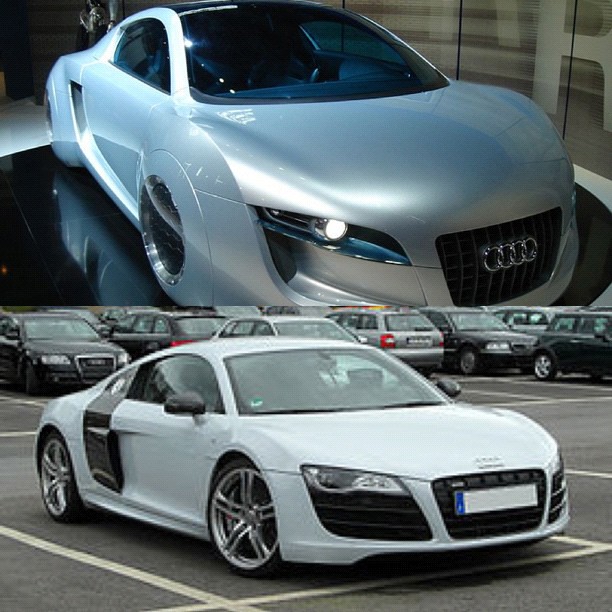It is the seamless transition between a movie and a commercial, the subtle distraction of our thoughts away from the story line towards a brand name, the billboard next to the highway of the film reel.
When I read Melody Han’s post about Lamborghini’s relation to the Batman-movies, I felt challenged to write more about the topic of product placement. It is not new, it is actually older than one may think. Being introduced in the early 20th century in silent movies, definining cinema classics such as Fritz Lang’s “M” (1931) already featured a banner that advertised “Wrigley’s PK Chewing Gum” in the background for a continous 30 seconds (1). However, the ways of implementation and how much product placement could be found in big movie and TV productions changed a bit over time. The simple banners in the background had transformed into characters using products and mentioning their brand names such as in one of the most famous examples, the “Back to the Future” movies from the 1980s. While the use of a DeLorean DMC-12 is surprisingly not part of sponsored product placement (the company ceased to exist prior to the first movie’s release), the movies feature many other companies’ (sometimes fictional) products by e.g. Pizza Hut, Texaco, Pepsi and Mattel.
.jpg)
Marty McFly always orders Pepsi, regardless if he is in 1955, 1985 or 2015.
Other companies are even more aggressive in promoting their products by simply promoting the entire movie: “I, Robot” (2004) was supported by Audi who even developed their very own concept car “Audi RSQ” to be featured as Will Smith’s automobile in the movie set in 2035 Chicago. While a very futuristic concept, the car was still recognizable as Audi and increased brand awareness of the company and increased the hype for future Audi sportscars: 2 years after the release of “I, Robot”, Audi launched their R8-model, the first high-performance car in the company’s history, which highly resembles the RSQ from the movie. This is a prime example for how a movie was used to test a target market for its reaction and subsequently release a product to react to the determined demand.

The Audi RSQ (top) was exclusively developed to be used in the movie “I, Robot”. 2 years after the movie’s release, Audi launched the “R8” (bottom picture), which resembles the futuristic concept car in many design aspects.
In 2013, the methods of product placement are more diverse and full of opportunity, thanks to the internet and the possibility to change content simply by clicking a button. I want to raise awareness of the development of product placement in interactive content such as video games. Companies such as Electronic Arts have already introduced this technique as early as in 2004 (“Burnout 3” featured in-game graphics with advertisements for other games published by EA) and have since developed more subtle and effective methods to include brand names into the gaming experience: In SimCity (released March 2013), players can build so-called “Nissan Leaf Charging Stations” for electric vehicles (3), which increase happiness among nearby citizens and increases eco-friendliness . The implementation fulfils a gameplay-purpose as well as raising brand awareness.

Driving a Nissan will make your Sims happy. The player will proceed in the game and knows that Nissan was the reason.
But just like with all other marketing strategies, there is always a threat to it. EA’s latest implemenetation is smart, but the previously mentioned example of billboards in “Burnout 3” was disliked by many customers and further damaged EA’s reputation as a “money-making machine” who do not care about artistical coherence (4). The same can happen to movies, when product placement is not always as charming and memorable as when Mom McFly “hydrates” a Pizza Hut-branded pizza for 2 seconds in a Black & Decker “Hydrator”: In one episode of “Sex and the City”, a show that collaborated with Apple for almost a decade and always prominently featured their products in the spotlight, much of the episode’s airtime is spent on how the Apple store has a solution for a computer problem and how easy it can be avoided if she had followed their recommendations in backing up data.
Particularly intrusive product placement has the ability to backfire for the sponsor and can cause negative reactions among the target audience, who actually just want to watch their favorite show or play a well-designed game.
Even though over 80 years have passed since Fritz Lang’s “M” hit the theatres, the old recipe is still the same: Product placement can be entertaining, fun and even enhance the experience and authenticity of the medium that is consumed, but the paradox secret behind outstanding implementation is to make its appearance almost unnoticably subtle, like a hydrated pizza in 2015.

Mom McFly hydrates a pizza (wrapped in a Pizza Hut-branded wrapper) in a Back & Decker “Hydrator”. A great example for very obvious product placement, that is still funny and charming and is well embedded into the story of a movie rather than disrupting it.
Sources
1) http://www.businesspundit.com/wp-content/uploads/2011/12/M_Wrigleys-600×464.jpg , retrieved on March 10th
2) http://www.blogcdn.com/blog.moviefone.com/media/2009/09/bttfbottle-%282%29.jpg , retrieved on March 10th
3) http://productplacement.biz/201304045078/branded-entertainment/nissan-product-placement-in-sim-city.html , retrieved on March 10th
4) http://thumbbandits.com/index.php/2010/01/burnout-3-takedown-review/, retrieved on March 10th
5) https://www.youtube.com/watch?v=YWSZJXhOvBw , retrieved on March 10th
6) http://files.myopera.com/jdlien/blog/pizza_hydrated_comparison.jpg , retrieved on March 10th
